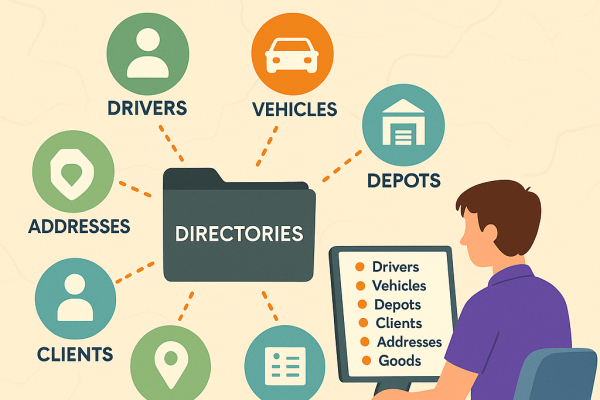Small Business Return Policy: 8 Indispensable Tips

by
Christopher Jan Benitez
February 18, 2022
In this post, guest writer Christopher Jan Benitez shares his tips on drafting and implementing a return policy as a small business. Dive in to get an overview of return policy best practices.
Irate customers are the last thing you want for your retail startup.
While it’s impossible to make all your customers happy, you should at least strive to meet in the middle with customers who have valid complaints regarding your business.
In particular, some of them may have purchased products that are defective or didn’t meet their standards.
In this case, the best thing you can do for customers who must return a product is develop a return policy and system that honors the need to reverse shipping logistics for customers who received incorrect or damaged items.
But a return policy can also be abused by customers who never intended to keep the products they bought. This results in your business losing money due to the refund and the shipment fees that come from picking the product up from customers.
To prevent this and other potential issues regarding your return policy from happening, make sure to observe the following tips.
1. Be clear about receipts
To put it simply, a receipt is proof of purchase. It also contains information about the transaction such as the costs, date of purchase, business information, and others.
So, before requesting a refund of the product, the customer must first present the receipt to you. This allows you to verify the transaction to avoid refund fraud.
Requiring a receipt when customers request a refund won’t always protect you from potential fraud. Nonetheless, it will serve as your first line of defense against it.
2. Require identification
Similar to the receipt, requiring customers to show identification allows you to verify the purchase.
You can search for the customer’s ID to cross-reference in your database. From here, you can see if the same customer has returned products repeatedly.
If s/he has done this multiple times, the customer may have been abusing your return policy. In this case, you can reject his or her request.
3. Differentiate “Return” from “Exchange”
Ideally, the return policy must refund the payment in cash or via credit/debit card (whichever mode of payment was used).
But some return policies include a rule that allows customers to return a product in exchange for a different product in your store.
Others rule out the possibility of exchanging the purchased product for a new one. Instead, they exchange the refunded item with store credits that they can use on select items only.
Regardless of how you wish to process returned items, be clear as to what your business is able to “return” and “exchange” for it.

4. Provide a window period for refunding
You don’t want to process refunds for products that you have discontinued in your store. That’s why it’s a common practice for retailers to establish a refund period starting from the day the product was bought.
This might be a refund window of seven days, 14 days, or a month (30 days). Some might even go as far as 90 days and beyond. This depends largely on the shelf life of the product you sell.
In some businesses, such as those who sell digital subscriptions or cloud-based software, returns are problematic because there’s no physical product involved. To avoid return hassles, the majority of these sellers offer a free trial period instead. It’s similar to a return, but easier to manage. Try the product for 7 or 14 days for free; then buy it if you like it, or walk away if you don’t. (This practice is based on the advice of top business consultants in the IT industry.)
Once the return period elapses, they can’t return the product anymore.
Your choice on your refund window’s reasonable duration depends on the products they’ll be returning to your store.
5. Set restrictions
As mentioned, you can’t allow customers to return discontinued items.
For online stores, you have to decide whether to foot the bill for the costs involved in returning the product. In addition to the return shipping fees, you could charge customers a “restocking” fee. This helps recover your labor costs for businesses that use a pick-pack-ship process to store and ship (or restock) their inventory.
Each business will have non-negotiables with their return policy, and you have to communicate this to them properly. This way, they know what to expect if they plan on returning an item they bought from you soon.
6. Check your competitors’ policies
If you’re still in the process of drafting your return policy, check out how your competitors laid out theirs, ensuring it aligns with the industry standards and your operating agreement.
For startups, it can be difficult to match the free shipping of your top competitors’ return policies, but don’t let that worry you too much if you sell a product that is very reliable, intangible, or has a low wholesale value.
-
Very reliable products – the number of returns is so small that you can afford to pay for return shipping in the small number of instances it occurs.
-
Intangible products and services – there’s no physical product to return, so there’s no shipping cost. You can issue a refund without worrying about other costs.
-
Products with low wholesale cost – If your cost to replace the product is less than the shipping cost to return it, you can tell the customer to keep, donate, or dispose of the product. For example, let’s say you sell a bamboo back-scratcher online for $10, and the customer wants to return it because their back no longer itches. Because you buy these in lots of 1,000, your wholesale cost per backscratcher is only 88 cents, but the cost to return one is $6. In this case, you could tell the customer that you’ll issue the refund but they don’t need to return the backscratcher.
Use your research to establish benchmarks on how you should create a fair and reasonable return policy within the means of your business.

Pro tip: It’s much more important to offer free shipping on the purchasing end of the transaction than on the return end. Free delivery attracts far more buyers and accounts for more sales – and the better your business does on the sales side, the easier it is to handle the cost of returns, no matter what your return policy is.
Also, to get the most mileage from your free shipping policy, have your SEO agency look at your competitors and audit their websites to see how they promote their free shipping policy online. Then devise an online promotional strategy to get similar attention for yours.
7. Train your employees about the policy
Since your employees will implement the return policy, make that they know its ins and outs. The goal is for your employees to comfortably answer any questions customers have about possibly returning their purchases.
At the same time, you want to make sure that all employees will have the same answer for each question so as not to confuse and anger the customer. In this case, an onboarding process is in order to keep all employees well informed and in check.
8. Implement the policy consistently
The last thing you want is to bend your return policy to certain customers. By allowing them to return products that disregard the return policy, you undermine the entire process. This opens up to irate customers demanding that they receive the same treatment as the special ones regarding return requests.
One way to ensure this is to automate as much of your return practice as possible. If you have a business with heavy customer service interaction, like businesses in the hospitality, finance, or healthcare fields do, you can even use chatbots to help communicate your company’s return policy clearly, without a human that your customer can pressure into making an exception.
Consistency is important, so you should always stick with your policy to a tee and not give preferential treatment to any customer. This way, you maintain the integrity of the policy that allows you and the customers to be honest and straightforward at all times.
Wrapping it up
The most important thing about your return policy is that both customers and employees know what it’s all about.
Onboarding your employees about it is one thing. For customers, you need to feature a link to your policy on your website’s header or footer section. You can also print out the policy and display them at your store’s point of purchase or in its customer support section.
Finally, some customers will express their displeasure with how you set up your return policy. As mentioned, you can’t really satisfy all your customers with your business decisions. But what you can do at the very least is to be fair and do the right thing for them.
Drafting your return policy by following the steps above is a step in that direction.
About The Author
Christopher Jan Benitez
Christopher Jan Benitez is a freelance writer for hire who specializes in the digital marketing field. His work has been published on SEO and affiliate marketing-specific niches.







